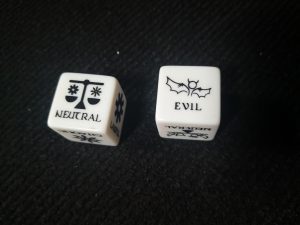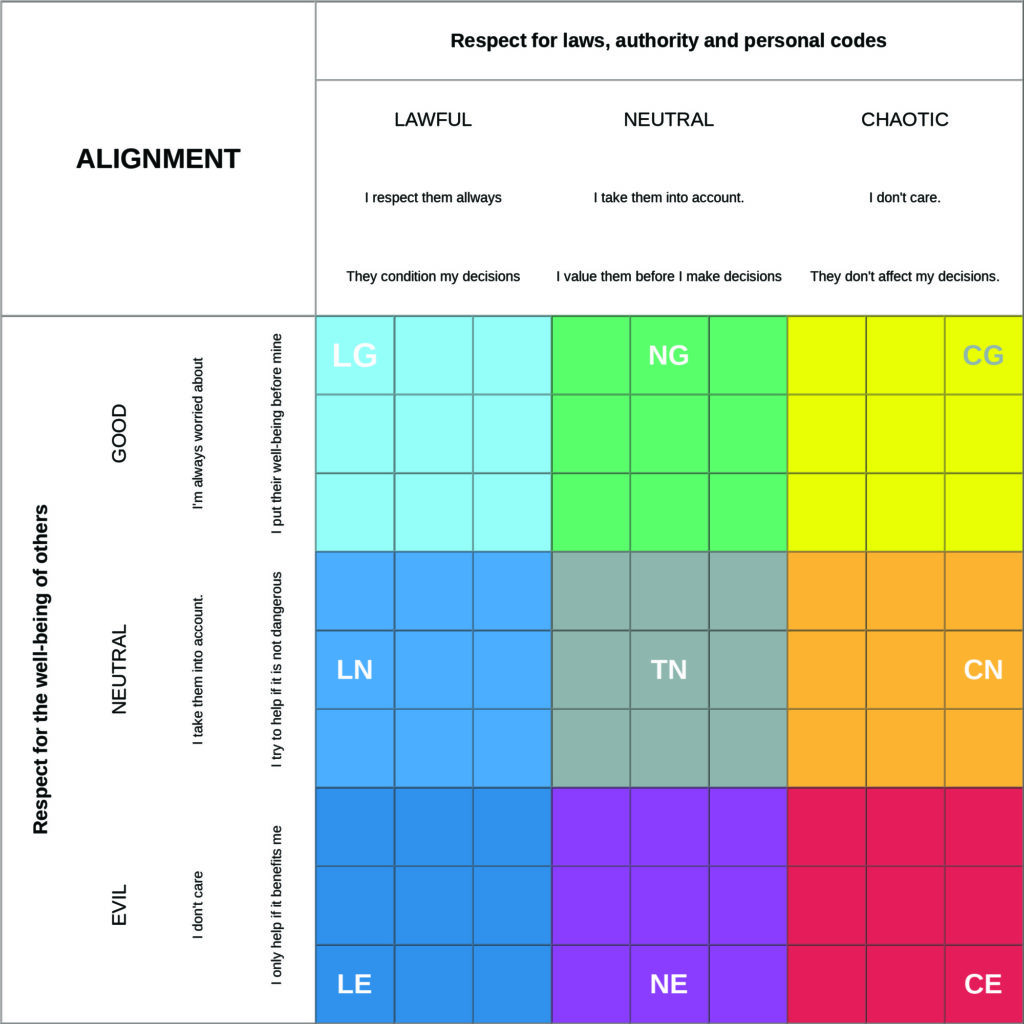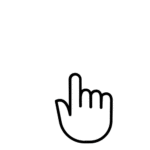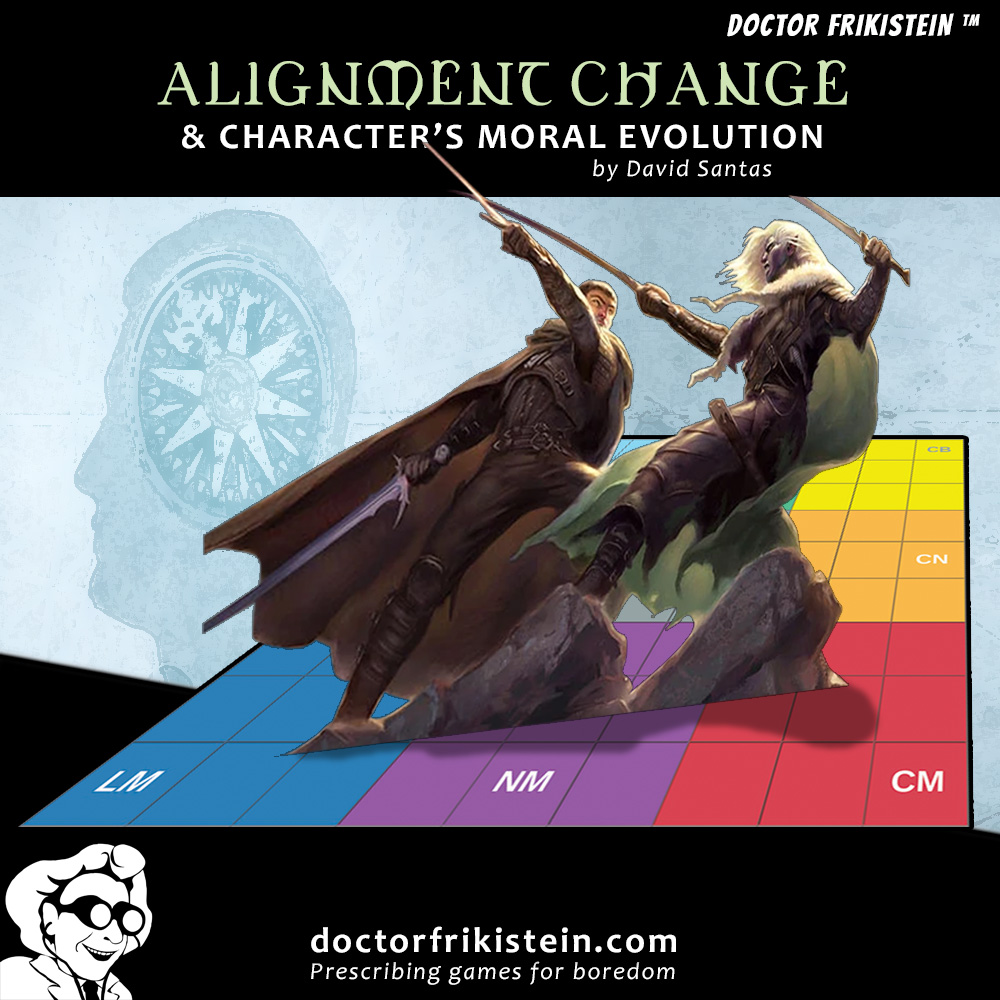In this article, we explain how to role-play the alignment of a rpg character, how to control the character’s alignment using an alignment table and an example based on 2 famous Dungeons and dragons characters: Drizzt do’urden and Artemis Entreri.
INTRODUCTION:
The Character’s alignment is a non-physical feature of a Dungeons and Dragons (although extended and used to other rpg games). Its purpose is to define the morality of the character. Sometimes a character class has to follow a specific alignment, so role-play the morality of the character is important to be consistent with the character’s decisions and actions.
Alignment has 2 aspects:
- Depending on the character’s respect for laws, authority or personal codes may be Legal, Neutral, or Chaotic.
- Depending on the character’s respect for the welfare of others, it may be Good, Neutral, or Evil.
The combination of these aspects results in 9 alignments: Lawful Good, Neutral Good, Chaotic Good, Legal Neutral, True Netural, Chaotic Netural, Lawful Evil, Netural Evil and Chaotic Evil.
Normally alignment is freely chosen, althought if your are not sure what to choose or you want a random alignment for your character, then you can use the alignmnent dices to the determine the character’s morality.

ALIGNMENT CONTROL:
In my opinion alignment is a great way to define the morality of a character and it is a great feature that, when I am the Dugeon Master, I like to use in all kinds of role-playing games.
However I have found that many players take the alignment more lightly. They don’t even take it into account when it comes to making decisions and on many occasions it is simply as a mere requirement to make a certain kind of character.
I had a player who loved to use paladins who must to be Lawful Good (at least in D&D 3.0). A class to fight evil, help people, support the group and very decent in combat. In general everything was going really well until he started to justice villians who asked for mercy. Soon this started to be pretty common. So I decided to “punish” the player changing the alignment from Legal to Chaotic. This simple fact caused the character to lose the paladin status and its special abilities. Logically the player complained about it but the debate originated made me think about it and then I created a Alignment Table.
ALIGNMENT TABLE:

This is a table I created to track the alignment of the characters according to their decisions. Each alignment is divided into cells. The cell marked by default is the cell that corresponds to the character’s alignment as indicated by the character’s sheet. When a character makes a relevant decision that moved away from his alignment, I write it down and move his alignment to the next cell that points better to the character’s decision.
Following the case of the previous player, the started alignment cell is marked as LG (Legal Good) which is in the top-left of the table. When the player therefore decides to take the law into his own hands, then I mark the square on the right side as his decision points to Chaotic. If this were repeated 2 more times, it would eventually change its alignment to Neutral.
At first I used the table as a Master’s tool but over time it alos was used by the players as an addon to the character’s sheet. The result was very positive, because that served as a guide to know better how to role-play their character.
CHARACTER’S MORALITY EVOLUTION:
The purpose of the table is not “punish” anyone who does not follow the alignment of their character, but to know really what alignment you are playing and give the player references of how to role-play. If you want to be a paladin, act like one. But if for whatever reason you decide to make other kinds of decisions, be aware of it. This is really relevant when you play a campaign with many seasons with the same character. In the end the character evolves just like the story does.
In the player’s previous case, his conduct was very corrected, he became a model paladin, the first of the order in righteousness and kindness…. but a murderer he had caught escaped and killed his family for revenge. Then he caught the killer in a very, very cool and epic adventure. When the killer surrendered and asked for clemency, the player decided to kill him. Me as Master and the rest of the players warned him:
-look that this will change your alignment and you know that if that happens you will stop being paladin. I reminded him.
-I know. He answered looking in my eyes. And after a brief pause I nodded, he roll the dice for…20. We all applaud and celebrate he epic moment!.
DRIZZT DO’URDEN & ARTEMIS ENTRERI:

Drizzt do’urden and Artemis Entreri are two fictional characters from the world of Forgotten Realms of Dungeons and Dragons. They are created by R.A. Salvatore as characters for his novels of which there are many books.
Drizzt is an “atypical” dark elf because he is Chaotic Good, while Artemis is an Lawful Evil Human Assassin. They are excellent fighters and also rivals.
After several books, specifically before and during the Neverwinter saga, the story has a very important twist and Drizzt eventually becomes more “amoral” and this suggests that his changed his alignmente to Chaotic Neutral. On the other side we have his enemy Artemis, that after suffering abuses by worst guys than him, he changed to act like a Lawful Neutral. This is my opinion because I think there is nothing written about this, but, as Dungeon Master and reader appreciated it in that way.
I’m a fan of these novels, so if you haven’t read them I recommend them. You’re sure to find them in your usual bookstore and also on Amazon.
(Take a look of RASalvatore‘s books on Amazon)
CONCLUSION:
As you can see the alignment is not a mere annotation on the tab. In my opinion alignment is a characteristic that can be very helpful to elaborate the background of the character. The Dungeons and Dragons 5e manual provides many more interesting options to create backgrounds for characters (Check DnD5e on Amazon). Sometimes an alignment is worth a thousand words to let you know what kind of character you are.





